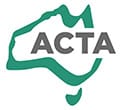Benefits of Partnering
|
A partnership arrangements can allow students to access opportunities that may only be accessible through collaborations. It is the coming together of Language Training Institute (LTi) with other organisations or individuals who are passionate about TESOL. We were the first and original creators of accredited TESOL training courses in Australia and are open to working with you to deliver high quality TESOL training. Whether you are an existing organisation, a sole trader or a person looking to start a business, we can support and assist you with getting started in the TESOL industry. Contact us to discuss partnership opportunities.
|
|
|
Licensing Arrangements
|
We have been at the forefront of TESOL since 1996, when we were the first organisation in Australia to receive Australian Government accreditation for a TESOL qualification. We are honored by the TESOL industry's wide acceptance and use of our materials both around Australia and globally. With over 50 partners and licensees having used our TESOL Resources nationally and internationally.
We continually refine, validate and develop our resources to ensure they exceed industry standards and stay up to date with the latest TESOL industry practices. The high quality suite of TESOL resources and assessment are mapped directly to current Australian Government Accredited TESOL Courses and include:
Licensees enjoy the use of our quality learning and assessment materials, which students find engaging, practical and easy to understand. The TESOL resources and assessment are available in both online and print versions, with online learning platforms available for licensees. |
|
Online Learning Platform
The TESOL Online Student System (TOSS) guides students through the Course with through a series of tasks designed to develop and assess students knowledge of TESOL. The robust system provides tutorial videos and facilitates online submission, marking and feedback for Course assessment. In the system, students have access to many complementary resources, including:
Licensees have the option to add their own logo to both the online learning platform and printed resources.
|
|
Trainer Resources
In addition to the student resources, we also provide licensees with access to Trainer Resources, such as:
|
Contact us to discuss licensing opportunities
and how we can work with you to get your RTO started in TESOL.
Enough about us, we want to know more about you!
Talk to us about what you'd like to do and how we can help you.
Talk to us about what you'd like to do and how we can help you.
|


















